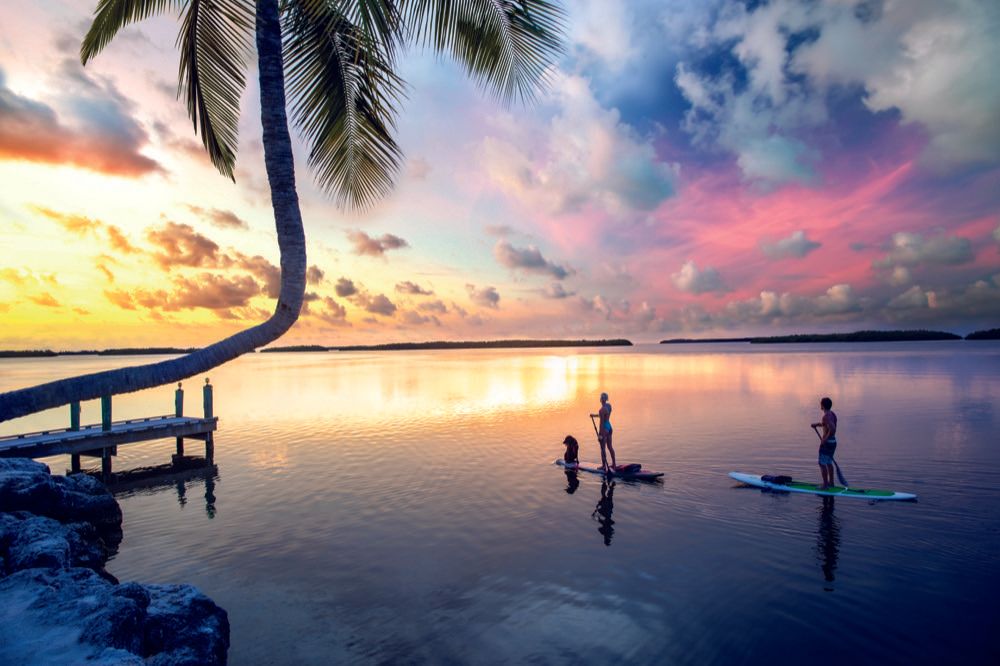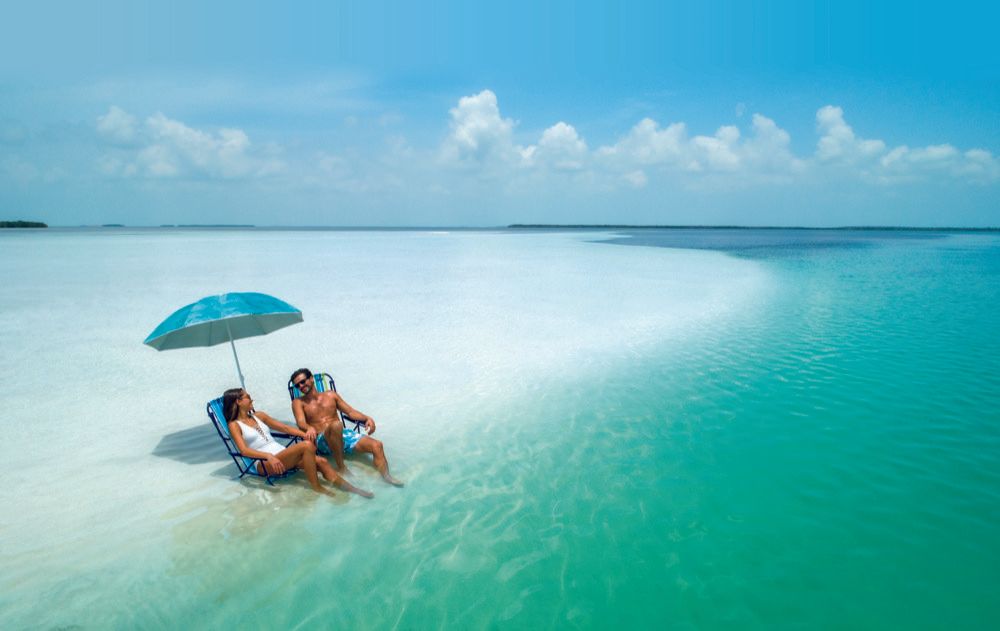Back to Florida
Florida Keys Eco Adventure7 nightsFrom £1665 per person
From £1665 per person
Price Includes: Flights, accommodation and car hire
The Florida Keys are the perfect place for an eco-adventure! Eco-tourism, conservation and protecting the stunning natural surroundings are paramount here, and you can enjoy an outdoor adventure experiencing the best of water and land-based activities, National and State parks, along with perfect island-style relaxation.
Day 1 Fly from the UK to Miami
On arrival collect your rental car and drive to Homestead, approx. 35 miles
Spend your first night in Homestead, where the Historic Downtown features art galleries, antique shops and specialty restaurants.
This is a perfect base for visiting Everglades National Park.
This vast nature preserve, also called “the river of grass,” has trails that will lead you to hardwood hammocks, cypress enclaves, ponds and mangroves. You will find an abundance of wildlife, from the iconic alligator and his cousin, the American crocodile, to the elusive Florida panther, bears, hogs, deer and the occasional ball python. Birds like the roseate spoonbill, white pelicans, egrets, storks and bald eagles all make their home here. Head for the southern-most point on mainland Florida, Flamingo, where you can rent a kayak or canoe for the day and explore the surrounding mangrove islands. Alternatively you can take a short walk or a longer hike on one of the trails to explore some of the park’s diverse habitats.
Spend one night in Homestead.
Day 2 Homestead to Key Largo, approx. 30 miles
Spend your day in Everglades National Park, before taking the short drive to Key Largo along the Eighteen Mile Stretch.
A visit to John Pennekamp Coral Reef State Park is a must! Here you can discover the oldest underwater park in the world and enjoy the park's popular water activities: viewing the reef on a glass-bottom-boat, snorkel and scuba tours, as well as canoeing and kayaking.
Head off-shore on a snorkelling or scuba diving trip – there are plenty of local operators who will take you four to five miles offshore to the reef for a half day excursion, making stops at different reef patches. The reefs are abundant with marine life, schooling fish, corals and sea fans.
Adrenaline junkies will love a parasailing trip and a chance to view the ocean and landscape from above!
Stay two nights in Key Largo.
Day 4 Key Largo to Islamorada, approx. 15 miles
Just a very short drive today as you head further south in the island chain. Islamorada is a great place to try kite boarding and lesson are available all levels and all ages. Catch air and go fast with this exhilarating alternative to surfing. Warm, knee-deep water is ideal for launching and riding, heading out to deeper channels for popping jumps and steady, ride-able wind carries kites from all directions. For an exhilarating rush over the sea grass flats, try a backcountry safari where ‘kiters’ slip through estuaries past marine life.
Rent a kayak and paddle out to Lignumvitae Key Botanical State Park, just one mile west off U.S. 1 (or take a boat tour) and explore the virgin tropical hardwood hammock that thrives on this island. Ranger-guided tours are given twice daily at the weekend. Or paddle east to Indian Key State Park, an easy 20-minute trip from Islamorada. Park your kayak and explore the remnants of the old wrecking colony destroyed by a surprise Indian attack.
Stay one night on Islamorada.
Day 5 Islamorada to Marathon, approx. 30 miles
Islamorada is known for its sport fishing and there are captains who will take you off-shore for marlin, pike and tarpon fishing, or you and do spot of back-country fishing on the bay, either with or without a guide. Or go shark diving and get up close and personal with sharks in their natural surroundings. The Florida Keys are home to some of the largest numbers of sharks in the world. Whether you are an experienced shark diver or a novice looking to see a shark for the first time, the operators here will take out to the ideal viewing spots.
For something a bit more relaxed visit the Turtle Hospital, a former bayside motel that has been converted to a facility where injured and sick sea turtles are being cared for, or the Dolphin Research Center where you can learn about their rehabilitation programme for Atlantic bottlenose dolphins and California sea lions. The Florida Keys Aquarium Encounters is designed to inspire visitors to adopt a passionate stance on conservation and preservation of the fragile marine ecosystems, and offers guests the opportunity to interact with the native inhabitants of the Florida Keys marine ecosystem.
Take a hike or walk at Crane Point, a slightly elevated patch of land referred to as a ‘hammock’, tucked away amid the heart of Marathon. This 64-acre tropical oasis of hardwood trees, nature trails and educational exhibits has been preserved from development and is another land-based option for exploring this part of the Keys.
Stay one night in Marathon.
Day 6 Marathon to Key West, approx. 50 miles
Today you’re heading further south to the Lower Keys, where things are even more relaxed! Make sure you take your time and stop at Bahia Honda State Park. Featuring an award-winning beach and historic bridge, Bahia Honda State Park a 524-acre state park located on Bahia Honda Key. It offers deep near-shore waters for swimming and snorkelling, as well as water sports such as kayaking and fishing.
Another great place to stop, unique to the Florida Keys, is the Key Deer Refuge. Big Pine Key is famous for its pine trees and the miniature version of the white tail deer that has evolved among them. Park along one of the roads passing through the National Key Deer Refuge and you are almost certain to see one of these unique deer.
Summerland Key is a popular spot for paddle boarding, and you can rent a board and take a leisurely paddle through the mangrove trees, along the beaches or in the backcountry flats.
Arriving in Key West, adventure can take on a different meaning, and usually starts with a sunset celebration. Mallory Square has artists, street performers and vendors to keep you entertained. Then move on to Duval Street for the Duval Crawl.
For an adrenaline fuelled adventure you can do a tandem sky-dive, and if you dare open your eyes the views are incredible! After that you might want to spend the day on the beach either at Fort Zachary Taylor or Smather’s Beach, but if you want some more eco-adventure book a day trip to the Dry Tortugas National Park. These uninhabited sand spits and coral formations are located nearly 70 miles west of Key West and can be reached by ferry or seaplane. Locals call this area “The Lakes”, and once there, you can hop onto a kayak and paddle over patch coral formations or along mangrove fringes. You can even grab your snorkel gear and study the fish, grasses, and soft corals. Whilst there you can also visit historic Fort Jefferson, a Civil War-era fortress in the Dry Tortugas.
Your adventure doesn’t have to take you all the way to the Dry Tortugas, and there are plenty of knowledgeable nature guides who can take you to explore the wondrous and mysterious mangrove islands, paddling through a maze of mangrove-canopied canals and streams. Witness and incredible tropical array of birds, stingrays, sharks, sport fish, and more. Guided snorkelling tours take you to the calm and protected waters of the Florida Keys backcountry for an exceptional underwater experience.
Stay two nights in Key West.
Day 8 Depart from Key West International airport
Drop your car off at the airport and fly to a gateway city for your connecting flight back to the UK.




